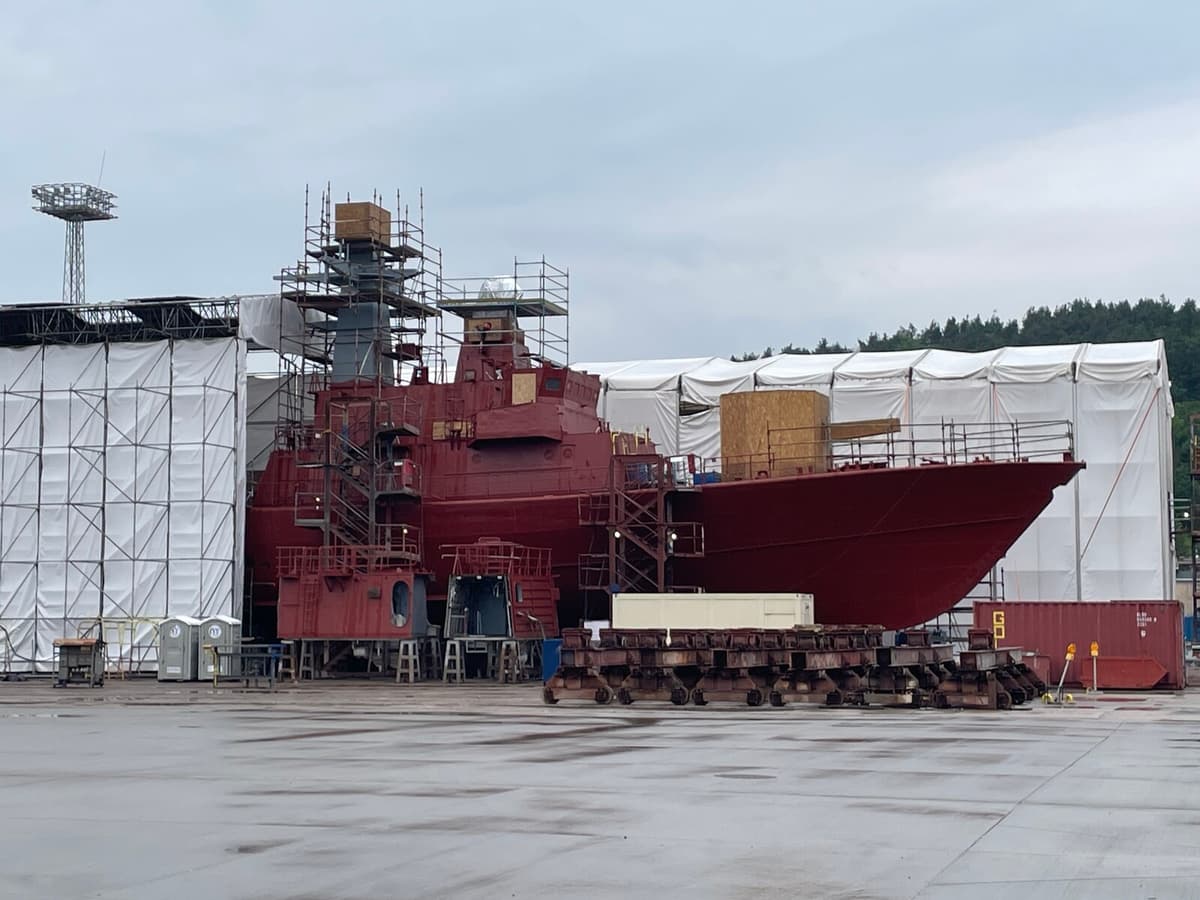Poland's Deputy EU Minister Magdalena Sobkowiak-Czarnecka is pleased.
I am very happy that the rest of Europe has finally woken up. In 2014, we were the ones who rang the alarm bell that the time of peace was over when Putin invaded Crimea. Now everyone understands that Poland was right, she says to TT and a group of other journalists at the Polish Navy's shipyard in Gdynia.
Here, what is described in numbers as 4.73 percent is happening - the amount as a percentage of the country's GDP that Poland is spending on its defense this year. The figure is expected to be at least 5 percent in the future, in accordance with the new NATO goal that is expected to be adopted at the military alliance's summit on June 24-25. It will be distributed as 3.5 percent in traditional defense spending and 1.5 percent in other investments with military benefits - such as roads, bridges, and civil defense.
New ships
In Gdynia, the first of three new Polish frigates is being built - state-of-the-art, with designs from the United Kingdom and steel from Sweden and Luxembourg, at a cost of the equivalent of 13 billion Swedish kronor per unit.
This is one of the best ships in the world, says the shipyard manager Marcin Ryngwelski proudly as he shows around.
Despite the fact that money is now flowing into the defense, he has no easy task. Skilled labor is a scarce commodity in an area where one shipyard after another was closed down at the beginning of the 2000s.
Almost 30 years ago, someone in Poland - I do not know who - decided that we should discontinue all technical training, because everyone just wants to become TikTok creators or consultants and lawyers, Ryngwelski ironizes.
He himself is active in educating the next generation of shipbuilders by teaching a few hours a week at the Polish Naval Academy, right next door.
Then I see who is good. The best are already working here. 80 percent of them are women, by the way, he says.
"He was right"
The old shipyard in Gdynia was almost closed down when Poland started investing again in 2017. Here, brand new halls coexist with rusty ruins from the communist era - and also some with bullet holes from German fire during World War II.
The upgrade is, of course, closely linked to Russia's war in Ukraine. The threat from the old enemy in the east has become relevant again and prompted a country that has been overrun in countless wars throughout history to act.
But even Donald Trump can take some of the "credit".
The US President's anything but subtle demands on NATO countries in Europe to invest more or risk being left without support have yielded results.
President Trump was tough and clear, and he was right, both in terms of content and how he said it. And you know what: it worked, notes Poland's Foreign Minister Radoslaw Sikorski.
Close to Russia
He warns harshly that from Warsaw it is only 25 miles - "across flat and simple terrain" - to both the Russian-allied Belarus and Russia itself, in the Kaliningrad enclave on the Baltic Sea.
There, they have, what we believe, around 100 nuclear warheads and the Iskander missiles that carry them and can reach several European capitals, not just Warsaw and Vilnius. I hope this will make our leaders focus on the right things, says Sikorski.
In Gdynia - where the Kaliningrad region can almost be seen across the bay - the shipyard manager Ryngwelski also sees a more civilian benefit to the products created at the shipyard, not least for countries like Ukraine and others by the Black Sea.
When we have peace in Europe, we will be able to offer lots of mine sweepers to your countries, promises Marcin Ryngwelski.
.
The Polish Navy consists mainly of ships over 40 years old, including two US-built frigates from 1978 and 1981 and a Soviet-built submarine from 1986.
At the Navy's shipyard in Gdynia, however, three new frigates of the Miecznik class are to be built - the same model as the British Arrowhead, which in turn is based on the Danish Iver Huitfeldt. The first is scheduled for delivery in 2029 and will be named Wicher. The name, by the way, does not come from the Polish book series The Witcher, which in recent years has become a worldwide success as both a video game and a TV series, but instead dates back to one of the Polish Navy's destroyers from the 1930s.
The shipyard in Gdynia is also starting the construction of a new submarine rescue ship, named Ratownik, this year. In September, a decision is expected on where Poland will order three new submarines, with the Swedish Blekinge class being one of five alternatives to choose from.
The heads of state and government of NATO are holding a summit in The Hague in the Netherlands on June 24-25, primarily to agree on new budget targets for how much countries should spend on their defense, as a percentage of their GDP.
The current target is at least 2 percent, which is considered too little - despite the fact that it was only a few years ago that only a few countries met the target.
A new target is expected to be at least 5 percent, distributed as 3.5 percent in traditional defense spending and 1.5 percent in other investments with military benefits.





